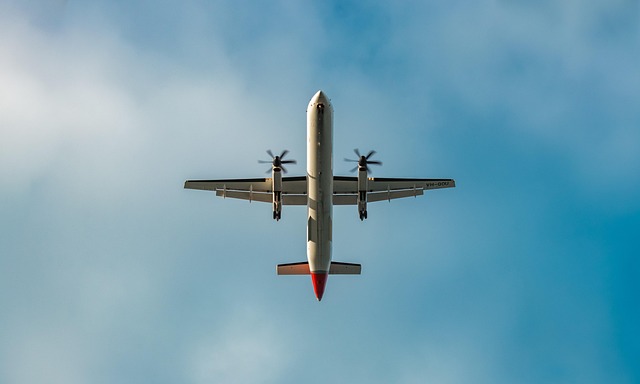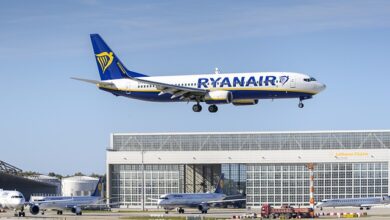The Future of Flight Deals: Trends to Watch

The aviation industry is undergoing a transformative phase, driven by technological advancements, shifting consumer behaviors, and global challenges such as the pandemic and climate change. As travelers seek more value, flexibility, and sustainability, the landscape of flight deals is evolving rapidly. In this article, we will explore the key trends shaping the future of flight deals and what they mean for airlines, travel agencies, and passengers.
1. Dynamic Pricing and AI-Driven Discounts
Dynamic pricing—where ticket prices fluctuate based on real-time demand, seasonality, and other factors—is becoming increasingly sophisticated with the help of artificial intelligence (AI).
How Dynamic Pricing Works
- Real-Time Data Analysis : AI algorithms analyze vast amounts of data, including booking patterns, competitor pricing, and even weather forecasts, to adjust flight prices dynamically.
- Personalized Offers : Airlines can offer tailored discounts to specific customer segments based on their browsing history, loyalty status, or past purchases.
- Flash Sales : AI enables airlines to launch short-term flash sales targeting last-minute travelers or undersold routes.
Why It Matters
Dynamic pricing allows airlines to maximize revenue while offering competitive deals to price-sensitive travelers. For consumers, it means more opportunities to snag discounted fares—but also requires vigilance to avoid overpaying.
2. Subscription-Based Travel Models
Subscription services are gaining traction in the travel industry, offering passengers unlimited or discounted flights for a flat monthly fee.
Examples of Subscription Models
- Corporate Travel Passes : Companies like Surf Air and Beacon offer all-you-can-fly memberships for business travelers.
- Budget-Friendly Subscriptions : Low-cost carriers are experimenting with subscription plans that provide access to a set number of flights per month at reduced rates.
- Loyalty Programs with Perks : Airlines are integrating subscription tiers into their loyalty programs, offering benefits like priority boarding, free checked bags, and exclusive deals.
Why It Matters
Subscription models cater to frequent travelers who value predictability and convenience. They also help airlines stabilize cash flow and build long-term customer relationships.
3. Sustainability-Focused Flight Deals
As environmental concerns grow, eco-conscious travelers are demanding greener options. Airlines are responding by offering carbon-neutral flights and incentivizing sustainable travel choices.
Green Initiatives in Flight Deals
- Carbon Offset Packages : Many airlines now bundle carbon offset credits with flight purchases, allowing passengers to mitigate their environmental impact.
- Eco-Friendly Discounts : Some carriers offer discounts for travelers who choose direct flights, book economy class, or participate in green initiatives.
- Sustainable Fuel Investments : Airlines investing in biofuels or electric aircraft may pass savings onto customers through promotional fares.
Why It Matters
Sustainability-focused deals appeal to environmentally aware consumers and align with corporate ESG goals. They also position airlines as responsible players in combating climate change.
4. Flexible Booking Policies
The uncertainty caused by the COVID-19 pandemic has led to a surge in demand for flexible booking options. This trend is expected to persist as travelers prioritize adaptability.
Features of Flexible Bookings
- No-Change Fees : Many airlines have eliminated change fees permanently, allowing passengers to modify their plans without penalty.
- Refundable Tickets : Budget-friendly refundable tickets are becoming more common, especially for premium economy and business class.
- Travel Credits : Unused tickets can often be converted into travel credits valid for extended periods.
Why It Matters
Flexible policies reduce anxiety for travelers and encourage bookings by removing perceived risks. For airlines, they enhance customer satisfaction and loyalty.
5. Integration of Metasearch Platforms
Metasearch engines like Google Flights, Skyscanner, and Kayak continue to dominate how travelers find flight deals. These platforms are becoming smarter and more user-friendly.
Advancements in Metasearch Technology
- Price Alerts and Predictions : Users receive notifications when prices drop or are predicted to rise.
- Augmented Reality (AR) Integration : AR features allow users to visualize destinations before booking.
- Seamless Booking Processes : One-click booking and integrated payment systems streamline the purchase process.
Why It Matters
Metasearch platforms empower consumers to compare deals across multiple airlines quickly, driving competition and lowering prices. For airlines, visibility on these platforms is crucial for attracting budget-conscious travelers.
6. Rise of Ultra-Low-Cost Carriers (ULCCs)
Ultra-low-cost carriers (ULCCs) are expanding globally, offering deeply discounted base fares while charging for extras like baggage, seat selection, and in-flight meals.
Strategies of ULCCs
- Route Expansion : ULCCs are adding new routes to underserved markets, increasing accessibility.
- Ancillary Revenue Models : By unbundling services, ULCCs keep base fares low while generating additional income.
- Partnerships with OTAs : Collaborations with online travel agencies (OTAs) amplify their reach and visibility.
Why It Matters
ULCCs democratize air travel by making it affordable for budget travelers. However, hidden fees can sometimes lead to sticker shock if not carefully managed.
7. Virtual Interlining and Multimodal Travel
Virtual interlining platforms connect flights from different airlines that don’t have formal partnerships, enabling seamless multimodal journeys.
Benefits of Virtual Interlining
- Lower Fares : By combining flights from multiple carriers, virtual interlining often results in cheaper itineraries.
- Enhanced Connectivity : Travelers gain access to routes that would otherwise require layovers or transfers.
- Integrated Experiences : Platforms like Kiwi.com combine flights with ground transportation, such as trains or buses, for door-to-door solutions.
Why It Matters
Virtual interlining opens up new possibilities for cost-effective and efficient travel, particularly for international or complex itineraries.
8. Gamification and Loyalty Rewards
Airlines are leveraging gamification and loyalty programs to engage customers and drive repeat bookings.
Innovative Loyalty Strategies
- Mileage Challenges : Airlines host challenges where members earn bonus miles for completing specific tasks, such as booking within a timeframe.
- Tiered Discounts : Frequent flyers unlock progressively better deals as they climb loyalty tiers.
- Gamified Booking Apps : Interactive features encourage users to explore destinations and redeem rewards creatively.
Why It Matters
Gamification enhances customer engagement and retention. For airlines, it fosters brand loyalty and increases ancillary revenue.
9. Localized and Regional Flight Deals
With rising interest in domestic and regional travel, airlines are focusing on localized promotions to attract nearby travelers.
Regional Deal Strategies
- Weekend Getaways : Special fares for short-haul flights encourage local tourism.
- Cultural Events Tie-Ins : Airlines partner with festivals, sports events, or exhibitions to offer themed packages.
- Seasonal Promotions : Deals tied to holidays, school breaks, or peak seasons boost regional connectivity.
Why It Matters
Localized deals cater to post-pandemic preferences for closer-to-home travel and support economic recovery in regional markets.


